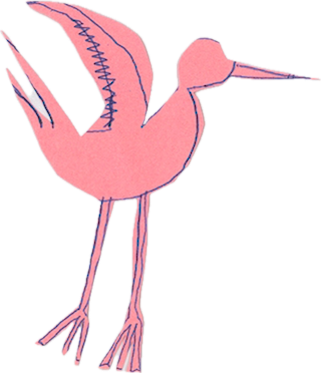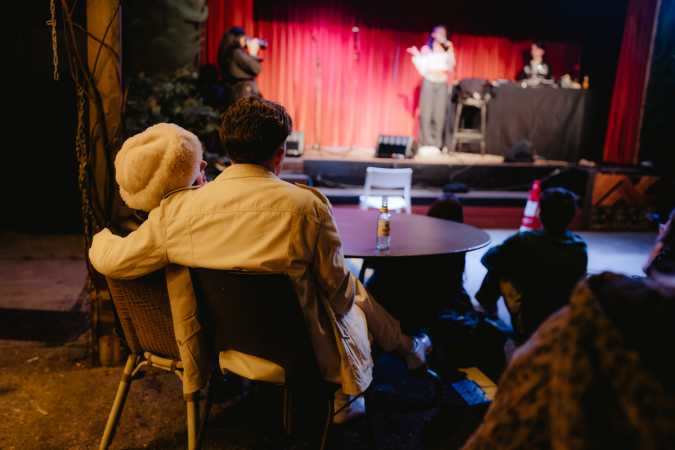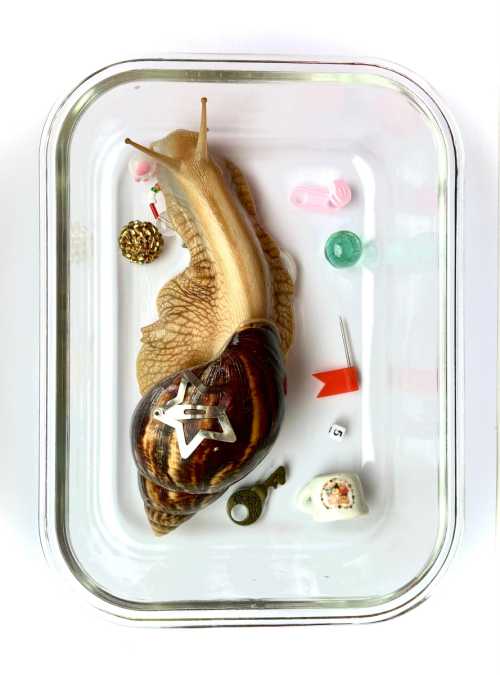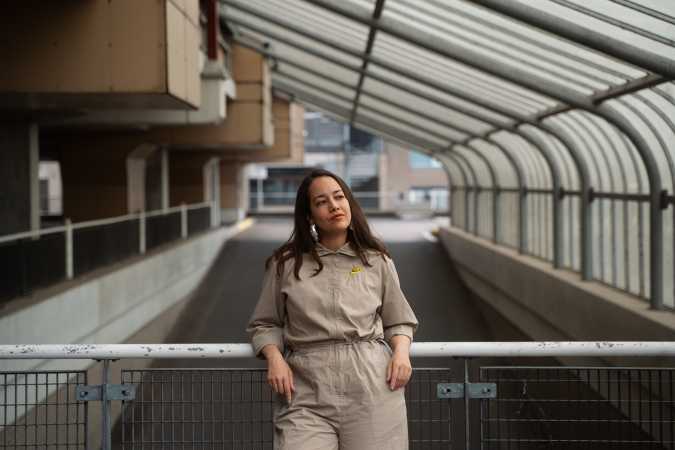U? is opening up a monthly reading group, not as a fixed program, but as a shared space to gather, reflect and think alongside one another. Each month, we’ll come together to explore questions that matter to the people in the room:
The first session takes place on Thursday, 31 July, at 5:30 PM, hosted by the U? team at our office in Utrecht. We warmly invite our extended network: artists and creators, venue partners, current and former community curators, independent curators we’ve worked with, as well as anyone curious to join. You can register here.
For this first session, we’ll read the Introduction of Curating with Care, edited by Elke Krasny and Lara Perry, which you can read below.
Introduction to 'Curating with Care', by Elke Krasny & Lara Perry
The word ‘care’ is becoming as present in the vocabulary of contemporary art and culture as has the word ‘curating’. While some may suspect this upward trend in use reflects mere fashionability, we demonstrate in this book that its prevalence in contemporary curatorial practice should be understood as a response to a dual crisis: the persistent crisis of social and ecological care that characterizes global politics and the more recent professional crisis of curating. The convergence of these two developments has resulted in both a call for ‘curating care’ – an invitation to give curatorial attention to the primacy of care for all life – and a call for more ‘caring curating’ – a change in the practices of curating to foreground caregiving as framed through social and political analysis. The structural crisis of care, and in particular its gendered and racialized dimensions, can be traced through a long line of critical feminist scholarship and labour activism, for example in the works of Margaret Prescod, Black Women for Wages for Housework, Silvia Federici, Selma James, Nancy Fraser, Madeleine Bunting, Françoise Vergès, and David Graeber. Today, in the twenty-first century, political struggles and large-scale movements, including Black Lives Matter, Ni Una Menos (Not One Woman Less), Idle no More, Fridays for Future, and, most recently, anti-war protests against the Russian invasion of Ukraine, oppose death-making and violence as the opposite of care. These movements can be seen to converge in demands for a different culture based on care, and respect, for the dignity of life, the rights of humans, and the rights of nature (the right of nature and the idea of environmental personhood).
The outbreak of the COVID-19 pandemic in early 2020 has moved the crisis of care from a concern of activist struggle and bottom-up politics to the central stage of global politics. At the very beginning of the pandemic, care was declared a critical infrastructure that was involved in answering both the most urgent need for care and the forceful obligation to give care. With 15 million people having died from COVID-19 and care workers comprehensively exhausted – physically, economically, and emotionally in the face of ever-increasing demands to persevere – the very vulnerability of care and the interdependency in care have become obvious (Dowling 2021; Hakim et al. 2020). One route by which this new understanding of care and the crisis of care has been circulated is through curated exhibitions, public programmes, and discursive and educational events. The cultural production of curators, including curation at different scales ranging from the big museum to the self-managed art space, from the global biennale to the local cultural community centre, is always an expression, and a reflection, of urgent contemporary concerns.
On the other hand, the ‘crisis of curating’ has been linked by critical curators and cultural critics to the stellar career of the ‘curator as author’ and the celebrated idea of the global ‘star curator’ as well as to curation-ism as perfected and glossy selectionism, taste-making, and the overall commodification and commercialization of culture for consumption and culture as spectacle (Heinrich and Pollak 1996; Balzer 2014). This ‘crisis of curating’ is critically diagnosed through the alignments of contemporary celebrity culture and the demands for ever-more, ever-faster, and ever-bigger exhibitions and even monumental single artworks. This compulsion to curatorial production and performance leads to the exhaustion and depletion of all those along the curatorial production chain, which, of course, entangles humans, infrastructures, technologies, and the environment. This contemporary ‘crisis in curating’ results from accelerated overproduction causing exhaustion of minds and bodies and depletion of resources, at the same time that it fails to replenish, regenerate, or practically support all those who might benefit most from such provision of care. Those who are located among the “caring classes”, in the coinage of the late anthropologist and anarchist David Graeber, have little or no time or resources to actually access the offerings of institutions of art and culture (Graeber 2019).

There is an increasing realization that institutions of art and culture make use of their symbolic power and their material infrastructures to endow the interests of big capital and individual wealth with a healthier glow or to engage in forms of fashionable ethics that resonate with the marketing of identity politics, soft authoritarianism, and illiberal democracy. This way of operating has been called out as ‘oil washing’, ‘green washing’, ‘white washing’, ‘pink washing’, or ‘purple washing’ and has led to new forms of what we suggest could be thought of as caring activism, for example the actions by the Gulf Labor Artist Coalition, Sackler PAIN, or Liberate Tate. Most recently, there has been the diagnosis of ‘care washing’, which sees care being promoted by museums as a symbolic value and through representational politics rather than by making concrete measures against racism and misogyny and for social and ecological justice.
Care washing is so called because it does not effect change. It is a surface effect that can be incorporated into marketing and ‘public relations’ rather than investing time and resources into building actual relations with the public, which requires engagement with the conflicts and contradictions inherent in care. A first step could be to think deeply about how the access to cultural institutions and what they offer is being made possible or being made impossible: how can those who have care obligations actually participate in this emergent culture around care? Who takes over their care obligations while they come to exhibitions, programmes, or assemblies in museums or cultural venues? How do the cleaners and guards of museums have access to economically just and dignifying work conditions and how can they access the cultural benefits of the institutions where they work? How can parents who are still nursing their little ones find a hospitable space in their cultural institutions? How can the frail or the elderly find zones of comfort to rest or be physically and mentally supported? Do neurodiverse visitors have adequate access to the presentation? How can the disabled and sick be welcomed?
In the field of museum studies and curatorial practices, the call to care has emerged most visibly in the demand to reverse the order of the conventional understanding of the curator’s duty of care. The role of the curator is traditionally understood to ‘care for’ the objects held in museum collections and shown in exhibitions that themselves were designed to educate visitors in the hierarchies of the global order under colonialism. This ‘duty to care’, which is enshrined in actual laws and state structures, positions museums as institutions and infrastructures in the service of the protection of objects of art and culture. The imperative to care for – to conserve and materially protect – such collections produces a crisis in curating in two related ways: some cultural objects were collected through colonial violence, theft, and dispossession, while other objects have never been considered of value to be collected at all. Class bias and gender bias excluded the culture of the working classes, the culture produced by women, and the culture produced by all those who could be named today as the caring classes, from museum collections and from the value system established and upheld by museums.
What does museum care as protection mean if objects are held against the will of those who want them returned to their communities of origin (see e.g. Sarr and Savoy 2018; Hicks 2020)? What do museum values stand for if they disavowed the need to care to begin with? One way in which museums and galleries have in recent years responded to this crisis in curating has been to insist on the curator’s obligation to people first and objects second. Both priorities for curatorial practice draw on long legacies of established practice that have already been identified in the scholarship on museums and exhibitions, and their competing nature is reflected in debates that are advanced through scholarly publications on the one hand (see e.g. Cuno 2008) and in professional guidelines on the other (e.g. the protracted negotiation over the place of social justice in the definition of the museum promoted by the International Council of Museums, Adams 2021). Such differences and conflicts are extremely characteristic of situations in which issues of care are concerned. While public or individual objectives of care and caregiving are often associated with the common good, benefit, service, and generosity, the arrangements for providing care in everyday life are on the contrary often shot through with conflict, confrontation, and dissatisfaction. The compromises required of those who offer care are rarely easy to make.
Today, many critical curators, scholars of museums, as well as critics and theorists of curatorial practices, including many of the contributors to this volume, insistently invoke the Latin word curare, which is the etymological root of curating, to stress that their practice is rooted in an anti-capitalist, anti-racist, decolonial, ecological, feminist, or queer agendas and to express that their curatorial work resists the limitations of the inequalities that are entrenched within cultural organizations. Why does the invocation of the historical semantics, via etymology, provide a basis through which to claim curating as a form of care? The Latin word curare, broadly speaking, means to treat, to cure, to look after, to edit, or to organize – it was used even for example to describe the management of the animals which would be sacrificed in religious ceremonies. The word curator first appeared in the English language in the fourteenth century, when it assumed the meaning of superintendent of minors or lunatics. Centuries later, during the long historical process of the formation of modern institutions, the curator came to mean a person, who was an overseer of a place of exhibition including museums, libraries, or zoos (Fowle 2007, 10). The different uses of the word expose the entanglements of care and control and the implications of the power of exposure or display that are accorded the curator. Insisting that curating can be practised as care calls for a present and future transformation of the established forms of curatorial practice that are increasingly identified with the entwined histories of colonialism, capitalism, and patriarchy and for new forms of restitution, repatriation, and reparative working in the aftermath of modern museum violence.

Care is invoked to resist the historic violence of curatorial power that imposed sexist and racist structures through the imperial and colonial collecting practices from which modern museum cultures originated but also exclusion of the so-called marginal positions from the museum episteme. The call to care is invoked against exploitative labour conditions in the cultural sector even as they reflect the conditions of workers more broadly; for example the structural precarization and emotional exploitation of workers including artists, curators, art handlers, educators, critics, writers, researchers, retail and restaurant workers, scholars, security guards, and cleaners. The invocation of care is often presented as an act of resistance and a potent form of treatment for the crisis of curating.
The turn to care in the work of many critical curators acknowledges that care has been structurally invisibilized, marginalized, feminized, racialized, withheld, denied, or outsourced. Care has been exploited by state powers to regulate, subjugate, or oppress bodies, creatures, and territories by controlling the conditions of bio-social and eco-material reproduction. What is more, care, be it domestic labour, healthcare, childcare, or elder care, is implicated in political and economic systems that structure societies, and care discrepancies produce highly stratified and unjust conditions. Unwillingly, care is implicated in the imposition of extreme violence and exploitation since its withdrawal leads to death. Care has been central to conflicts and deep divisions within feminism, resulting from the histories of domination and exploitation connected to the mistress–slave or the mistress–maid constellation, and today these conflicts continue in new forms of massive exploitation and extraction of caring labour in the provision of services such as cleaning, childcare, and garment production. The potential of struggles around care to unify those who have been assigned female at birth can be neither assumed nor achieved without conflicts, as divisions of caring labour not only have to do with gender but also with race, caste, or class.
Attempts to formulate the required changes to curatorial practice have been articulated in many recent articles, texts, roundtables, and symposia. Projects and initiatives are numerous, we can name only a few here to draw the attention to this turn to care in curatorial practice:
Projects and initiatives
‘Caring for Conflict’ at district Berlin 2017–2019; the transnational ‘Pirate Care Project’ convened by Valeria Graziano, Marcell Mars, and Tomislav Medak, running since 2019; the research-based exhibitions Care and Repair and Critical Care curated by Angelika Fitz and Elke Krasny for the Architekturzentrum Wien; Care Force initiated in 2019 by artist Marisa Morán Jahn together with the ‘National Domestic Workers Alliance in the United States of America’, ‘Intersections of Care’, a research project in the arts by Florence Cheval and Loraine Furter, initiated in 2019; ‘Rituals of Care’, curated by Stephanie Rosenthal and Noémie Solomon for the Berliner Festwochen in 2020; ‘Initiative for Practices and Visions of Radical Care’, self-initiated and curated by Nataša Petrešin-Bachelez and Elena Sorokina in Paris since 2020; the ‘Care Council’, co-initiated by Eliana Otta, one of the contributors to this book, in Athens; the ‘Bureau of Care’ initiated by iLiana Fokianaki, State of Concept Athens, running in the years 2020– 2021; ‘to Mind is to Care at V2 Lab For the Unstable Media in Rotterdam’ in 2020–2021; the Ecologies of Care’ group initiated by Urska Jurman and Elke Krasny in 2021; the Environments of Care Group initiated by Elke Krasny and Lindsay Harkema; People Make Museums: Museums and Care Programme at the Holbourne Museum in Bath, UK in 2022; Take Care group exhibition at La Ferme du Buisson, France, 2019; Care and Citizenship Programme at the De La Warr Pavilion in Bexhill-on Sea, England in 2021.
Highlighting global interdependencies and the necessity for mutual as well as self-care, the writers of this volume speak from practices that address the local conditions of care and carelessness for which calls to social, economic, or environmental injustice demand redress. Each of the chapters elaborates the details of an individual project, as intended and in many cases executed, that offers a different perspective on how care can be enacted in and through curatorial practice. The projects or processes represented have largely taken place since around 2017, so they can be considered to represent a relatively compressed period of curatorial practice; while the contributions represent activities that take place in different geographies, we have presented them as more powerfully related through the objects of care that they address in their locally specific and situated contexts in different parts of Australia, Europe, the Americas, and South Asia.
The structure of the book follows from the work of the contributors, who analyse or reflect on the conditions, potentialities, and limitations of working ‘with care’ as practising curators, drawing on examples of their commitment to curating ‘with care’ and the challenges this presents but also the hope this generates. The two parts of the book – ‘Caring Curating’ and ‘Curating Care’ – explore different approaches to curatorial care. What does it mean to be doing something ‘with care’? It can mean a specific way of doing something, a manner of filling the way one is doing whatever one is doing ‘with care’, that is with very close attention and consideration. It can also mean to be doing something in particular relation to care, to be choosing care as the subject matter, as the question, as the theme, as the matter of concern.

Curating with care can also mean that curators choose to work on care as their subject matter. ‘Curating care’ therefore refers to exhibitions, programmes, or activities which are dedicated to the subject matter of care, broadly understood, or even to the collective rehearsal or imagining of new practices of care. We make this distinction here, not to say that one group of curators can be understood as ‘caring curators’, that is working in a caring manner, while another group of curators can be understood to be dedicating their work to only the subject matter of ‘care’. Rather, we introduce this distinction to frame the analysis. One can therefore use ‘curating with care’ not only to describe a way of working but also as a theoretical perspective with which to analyse curatorial practices to understand how ‘caring’ was enacted; how working in caring ways was enabled or hindered by specific institutional and infrastructural frameworks including budget, time, and resources or the structural discrimination, sexism, racism, and systemic injustices endemic in the continued legacies and present-day formations of patriarchy and supremacy. One can analyse how curatorial work made care the subject and in which traditions of understanding care that curatorial work can be placed. We may think of to give some examples: indigenous cosmologies; Western philosophies; economic and political understandings of social reproduction and care ethics; and histories of birth, nursing, domestic work, healthcare, hygiene, agriculture, and mourning. We are introducing the distinction between ‘caring curating’ and ‘curating care’ to invite more nuanced and more complex ways of practising and analysing curating. This distinction makes clear that caring curating is needed regardless of what any chosen topic may be, not just when the chosen topic is care. The distinction moreover invites critical thought on how exhibitions or programmes that choose care as their subject matter are actually able to commit to practising caring curating. Care is always met by limitations, is pushing against existing conditions, as it seeks to promote more just ways of existence. Here, etymology, can, again, provide us with historical semantics as a useful tool to think and practise curating with care. This time, it is not a Latin root but Old English that informs an understanding of what curating with care entails. “The word care derives from the Old English cearu suggesting sorrow, anxiety, grief” (Ahmed 2017, 169). Working with care, curating with care, is also always working with the sorrows and anxieties that each single and specific situation of care entails in the continuum of care needed to sustain life.
Care is always material. Care is always relational. Questions of care, demands for care, and care needs cannot be answered in the abstract but must be answered through the relations in which care is embedded and which are enabled, supported, performed, or even established through care. Curating with care asks political questions that have to be answered, not in the abstract, but concretely, in institutions, infrastructures, and beyond, in all the relations to which the making of a curatorial work, be it an exhibition or a workshop, a symposium or a gathering, is connected. Ethico-political questions of care can never be answered in the abstract; they must be answered bodily, environmentally, materially, spiritually. They must be answered at all scales. Every decision taken in a curatorial process is always a decision that relates to dimensions of care and has implications on how well care can be given and received.
This is why, exactly like the work of care in everyday life which is never done, ‘curating with’ care can never be finished, can never be complete. Curating with care is neither the next ‘new’ project nor a matrix of quantification to perform better than others. Curating with care involves and foregrounds the importance of the much-needed but often forgotten activities, which demand more – more time, more attention, and more resources – to treat all relations ethically and care-fully. This caring curating may not yield immediately visible results, or products, as they are required by the art world and the world at large. Yet the continued and persistent lack of care activities does have results that need to be made visible as part of what curating with care does. The lack of care in cultural work continues to harm and wound beings and environments. The exposure of this lack is the beginning of any struggle against these conditions and the start of forming new imaginaries and ontologies of care through a curated connection between care and culture.
Curating with care, understood in the broadest sense possible, asks of curators and theorists to confront themselves with what their work ‘cares about’ and how they ‘care for’ what they ‘care about’. An ethics of care as praxis and theory of curating therefore thinks, feels, analyses, and works with the complexities and contradictions that economically, emotionally, epistemologically, materially, and technologically present themselves when aiming to align ‘caring about’ with ‘caring for’. Curating with care as an anti-capitalist, anti-colonialist, anti-racist, and anti-sexist praxis and politics not only examines what curators’ work cares about, and what their work cares for, but can also contribute to new caring imaginaries and new caring ontologies that help us to learn how to care for care.
*Dimitrakaki and Perry 2013; Bayer et al. 2017; Krasny 2017; Reilly 2018; Hicks 2020; Krasny and Perry 2020; Ndikung 2021; Krasny et al. 2022.
From: Curating with Care, edited By Elke Krasny & Lara Perry. © 2023 by Routledge. Reproduced by permission of Taylor & Francis Group.
Artwork by Tonya Belugina



